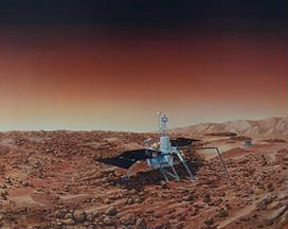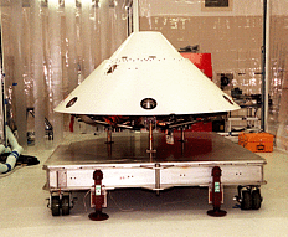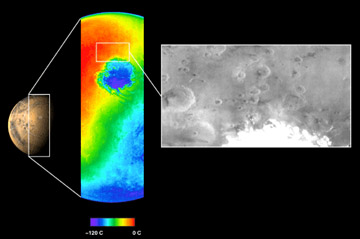Click on image for full size
Courtesy of NASA
Related links:
NASA Needs to Change Mars Program
News story originally written on March 29, 2000
A panel made up of aerospace experts studied NASA's recent ventures into space, including the Mars Climate Orbiter and Polar Lander. The results of the study aren't very friendly to the NASA organization. Some of the problems found include:
- A lack of funding.
- A design flaw in the Polar Lander.
- The two microprobes weren't designed well.
- Some officials were extremely over-worked.
"They have rigorously scrutinized both successful and unsuccessful missions, shining a searchlight into every corner of the incredibly complex endeavor of deep space exploration," NASA Administrator Dan Goldin said.
The panel also concluded the most likely cause of the Polar Lander disaster was a computer error. When the probe was told to lower its landing legs, the craft thought that meant it had landed. The engines were shut off when the lander was still 130 feet above the surface, resulting in a deadly crash into the Mars surface.
NASA is already starting to correct the problems the panel found. The "bigger, faster, cheaper" approach will most likely be scrapped. "We could have probably pulled these missions off if they were a little less cheap," one official said.
However, the goal of finding water on Mars and someday visiting the planet is still within reach. Future Mars missions will probably be delayed, but the program is still going strong. "The major path to this is find the water," one scientist said. "That is not a five- or six-year program. It is a decade-long program."















